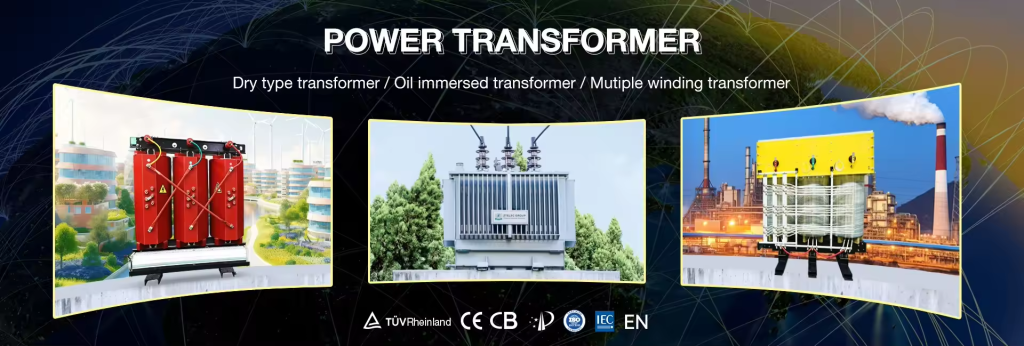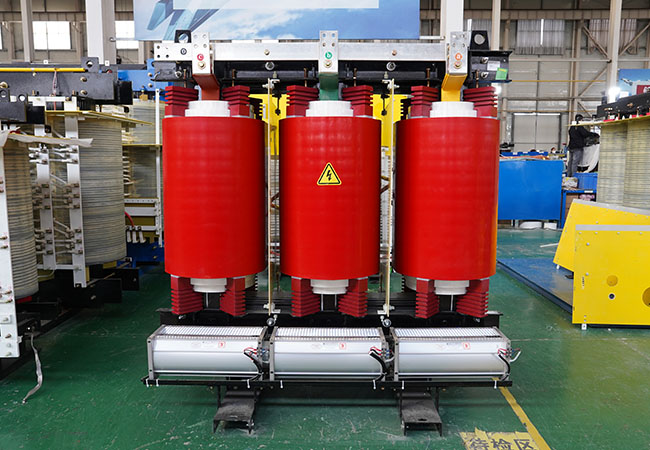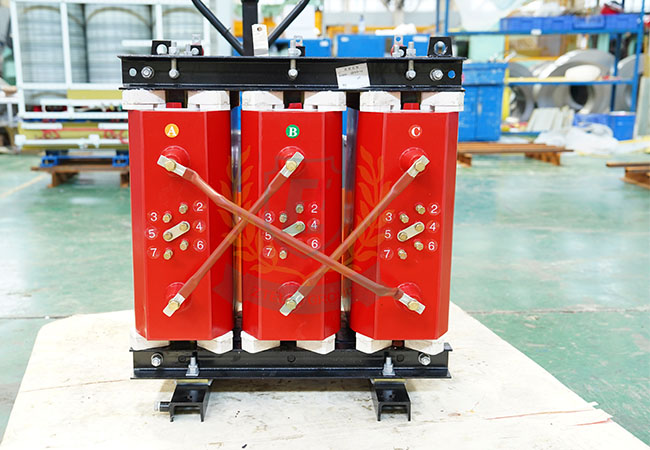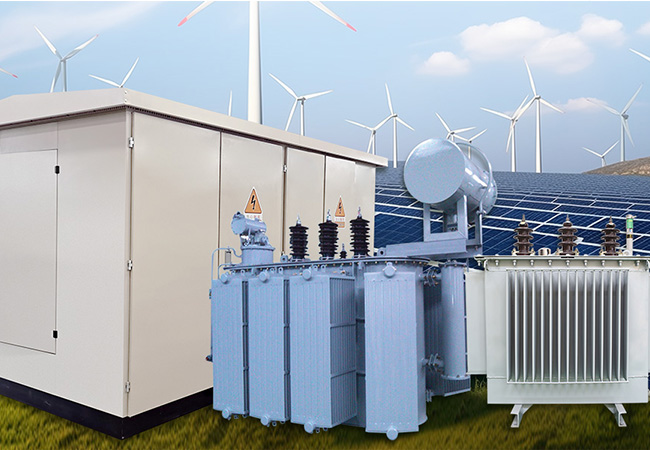Three Phase Dry Type Transformer
07-11 2025 | By:
he Three Phase Dry Type Transformer: An In-depth Analysis with Parameter Table
In modern electrical systems, the three phase dry type transformer plays a pivotal role in power distribution and voltage regulation. This article provides a comprehensive overview of its model parameters, specifications, application scenarios, and advantages, with a detailed table outlining key technical details.
Model Parameters and Specifications Table
|
Parameter
|
Specification
|
Application Scenarios
|
|
Type
|
Three Phase Dry Type
|
Industrial, commercial, medical, and urban power distribution systems.
|
|
Rated Capacity
|
50 kVA to 8000 kVA
|
Varied applications based on capacity (e.g., small workshops to large industrial plants).
|
|
Voltage Range
|
HV: 6.3/10/11/33 kV, LV: 0.4 kV
|
HV for transmission, LV for local distribution.
|
|
Frequency
|
50Hz/60Hz
|
Global compatibility with standard power systems.
|
|
Cooling System
|
AN/AF/ONAN (Oil/Natural/Air)
|
AN for general use, AF for high-load environments.
|
|
Insulation Class
|
H/F/B (180°C/155°C/130°C)
|
H-class for high-temperature environments, B-class for standard conditions.
|
|
Winding Material
|
Copper/Aluminum
|
Copper for high-efficiency, aluminum for cost-effective designs.
|
|
IP Protection
|
IP20/IP23/IP54/IP65
|
IP20 for indoor use, IP54 for outdoor/dusty environments.
|
|
Overload Capacity
|
120% rated load
|
Temporary high-demand scenarios (e.g., industrial machinery startup).
|
|
Noise Level
|
≤ 50 dB (AN), ≤ 60 dB (AF)
|
Suitable for residential, hospitals, and office buildings.
|
|
Dimension/Weight
|
Customizable (LxWxH)
|
Compact designs for space-limited installations.
|
|
Safety Features
|
Fire-resistant, non-toxic epoxy resin
|
Ideal for indoor environments with high fire safety requirements.
|
1.
Rated Capacity (50-8000 kVA):
○
Small Capacities (50-100 kVA): Ideal for small workshops, laboratories, and residential complexes.
○
Medium Capacities (100-800 kVA): Suitable for commercial buildings, hospitals, and medium-sized factories.
○
Large Capacities (800-8000 kVA): Critical for heavy industrial applications, power substations, and data centers.
2.
Voltage Range (HV/LV):
○
HV (6.3-33 kV): Used in primary distribution networks to step down high voltage from transmission lines.
○
LV (0.4 kV): Supplies power to end-user equipment like motors, lighting systems, and control panels.
3.
Cooling System (AN/AF/ONAN):
○
AN (Natural Air): Best for routine operations in well-ventilated environments (e.g., factories, warehouses).
○
AF (Forced Air): Necessary for continuous high-load applications (e.g., mining equipment, heavy machinery).
○
ONAN (Oil/Natural/Air): Hybrid designs for enhanced thermal management in extreme conditions.
4.
Insulation Class (H/F/B):
○
H-Class (180°C): Preferred for environments with high ambient temperatures (e.g., tropical regions, enclosed substations).
○
F-Class (155°C): Common in general industrial settings where moderate heat resistance is required.
○
B-Class (130°C): Suitable for standard applications with minimal thermal stress.
5.
IP Protection (IP20/IP23/IP54/IP65):
○
IP20: Indoor use with limited dust protection (e.g., office buildings, cleanrooms).
○
IP23: Outdoor installations with protection against rain and moderate dust.
○
IP54: Harsh environments like construction sites, chemical plants, or coastal regions.
6.
Overload Capacity (120%): Enables temporary operation at 120% load for short durations, crucial during peak demand periods (e.g., equipment startups or grid fluctuations).
Advantages
1.
Safety and Environmental Compliance:
○
No oil-based insulation eliminates fire risks and environmental pollution.
○
Fire-resistant epoxy resin ensures non-toxic operation even under high temperatures.
2.
Energy Efficiency:
○
Low no-load and load losses reduce electricity consumption and carbon emissions.
○
Optimized winding designs minimize energy waste.
3.
Maintenance Efficiency:
○
No oil maintenance (e.g., filtration, leakage checks) lowers downtime and costs.
○
Self-diagnostic features and monitoring systems enhance predictability.
4.
Flexibility and Durability:
○
Compact size and customizable dimensions fit various installation spaces.
○
High mechanical strength withstands vibrations and thermal shocks.
5.
Wide Adaptability:
○
IP-rated protection and moisture-resistant coatings suit indoor/outdoor use.
○
Taps and voltage regulation options accommodate fluctuating grid conditions.
6.
Quiet Operation:
○
Advanced winding and core designs reduce noise, ideal for noise-sensitive environments (e.g., hospitals, schools).
Conclusion
The three phase dry type transformer is a cornerstone of modern power infrastructure, balancing efficiency, safety, and adaptability. Its diverse parameter options and robust design make it indispensable across industries, urban grids, and critical facilities. As electrical systems evolve toward sustainability and reliability, these transformers’ advantages in energy conservation, safety, and ease of maintenance will continue to drive their widespread adoption. Future advancements in materials and cooling technologies are expected to further enhance their performance, solidifying their role in the global electrical ecosystem.
You may also find these interesting:





